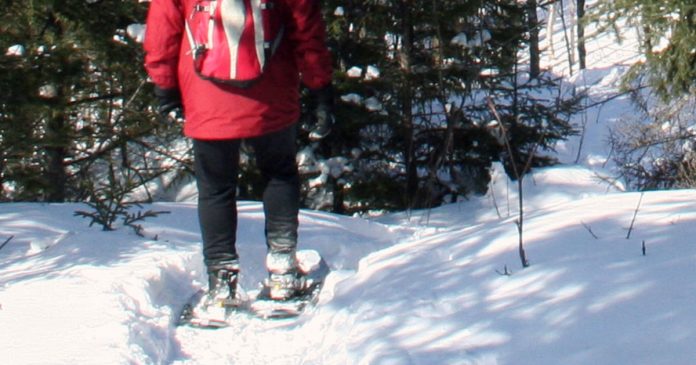
As another summer slowly dies, colder weather is going to start creeping its way into our lives again. In my area this is my favorite time to go backpacking. Less creepy-crawlies, beautiful changing foliage, and not brutally hot during the daytime. A lot of other people feel the same, and outdoor treks may be more enjoyable soon in your area too.
However, the cool that makes being outside more enjoyable can also bring deadly consequences. So what can we do to protect ourselves from bitter cold?
If you get stuck in a survival situation, or want to avoid putting yourself in one while you’re camping/backpacking/canoeing/whatever these are the things that you need to remember.
Cold Basics
The human body runs at 98.6 degrees Fahrenheit. Once we get chilled to the point where our temperature drops to 95 degrees hypothermia sets. The very first thing you need to remember about cold is that you must stay dry. Wet clothing can conduct the heat away from your body up to 50x faster than dry clothing. As a result, getting yourself soaked by rain, covered in snow, or drenched in sweat is a definite no-no.
Do what you can to avoid such situations. Whether that be utilizing snow shoes, wearing a poncho, or taking breaks in manual labor when you start to feel yourself beginning to sweat, do what you must to stay dry.
Proper shelter is often the primary key that will keep you from getting wet, and at the base level that starts with the clothing that you wear.
Clothing Choices
In the backpacking world there is a saying: “Cotton kills.” Once cotton gets wet, as clothes are known to do in outdoor weather, it completely loses all insulating properties. It does not regain them until it is completely dry which takes a long time. That is why when choosing outdoor clothing (hunting/fishing/hiking/etc.) you should avoid cotton at all costs.
This: 
Wool is the number one natural fiber that will still keep you warm despite being wet, but it has a reputation for being itchy. Merino wool and alpaca fleece are natural alternatives here. Both are incredibly soft, not itchy, and will still keep you warm when wet.
When it comes to synthetic fibers polyester blends and polypropylene are some of the best out there. Fleece, Gore-Tex, and DryLete make great choices in clothing fiber type.
Keeping the “wet makes you miserably cold” principle in mind, buy boots that are waterproof. There are plenty of manufacturers out there making high-quality boots that don’t look like waders which you’ll appreciate. It can be hard to have fun when you can’t feel your toes.
It’s also important to realize that up to 30% of the body’s heat is lost through the head and neck. This being the case, you should wear a hat at all times when out in cold conditions, and do what you can to keep your neck covered. Cold hands? Gloves definitely help, but are inferior to mittens for warmth. Gloves keep each finger isolated, as well as the warmth emitted from each finger. With mittens, the fingers are allowed to warm each other. I’ve used old military surplus ones in incredibly cold conditions and they work great.
How to Sleep in the Cold
When it comes to camping in winter weather buy a bag rated as cold as you can get. I know some people get worried about overkill here, but they seem to quit worrying about that when it’s 3 AM and their teeth are chattering. If you get overheated with an “overkill” bag, it’s a very easy fix. That isn’t the case in reverse.
Secondly, mummy bags are much better at retaining heat than your traditional sleeping bag. A mummy bag has a tapered foot at the bottom meaning that you will sleep with your feet close together (like a mummy. Get it?). Yeah, you won’t be able to move about, but the smaller interior area means that there is less space within the bag that your body has to heat up. You stay much warmer as a result.

I avoid down-filled bags, as once down gets wet it loses the majority of its insulating properties. It’s definitely not a filler that you want to take on a canoe trip with you. Plus, down tends to clump up meaning there are going to be spaces within your bag that are not properly insulating your body from the cold.
Don’t expect to not have a miserable night if you don’t have a sleeping pad of some sort as well. The ground is cold, and it is going to want to suck all of the heat out of you that it possibly can to make itself warmer. It’s like a warmth vampire. A sleeping pad between you and the ground keeps your body heat in your body and away from creepy dirt vampires. They also provide a thin layer of cushioning between you and the ground as well, so it’s a double win for you to use one.
Gadgets
Anytime I’m out in the woods in the cold, I always carry HotHands and a space blanket with me. (I’ve never understood why they’re called ‘space blankets’. Is it because they don’t take up a lot of space, or is it because it looks like something an astronaut would use?)


I’ve found both to be surprisingly effective. On one ham-mocking trip I took, I woke up at 3 AM shivering like crazy thanks to cold butt syndrome (It’s a thing. Look it up.) Thankfully, I had a space blanket with me. Within minutes of wrapping myself up like a big bean burrito, I could easily feel the warmth returning to my body, and I spent the rest of the night actually warm enough to sleep comfortably.
It’s hard to use a space blanket while you’re hiking though. When I’m on the move I use HotHands. I’ll activate one or two and place them within the inside pockets of my jacket. You actually have to keep these things migrating from pocket to pocket or you can end up cooking yourself.
Don’t solely rely on these two items to keep you warm. You can’t go out hiking in a cotton T-shirt, get drenched by surprise weather, and then expect fantastic results from a HotHands packet and a space blanket. Don’t be stupid. Both of these items will definitely help to keep you warm, but you don’t want to be fully relying upon them if you can help it.
Wrapping it Up
Above all else, use your head. If you have some serious qualms about what you’re getting yourself into because the weather is looking more iffy than normal, then don’t go. That’s how you avoid putting yourself in a survival situation to begin with. When you are out though, following the above advice will help to ensure that you not only stay as warm as possible, but safe from hypothermia and frostbite as well.

















